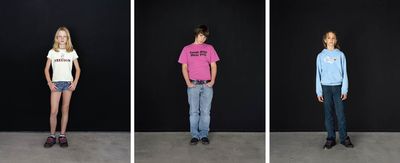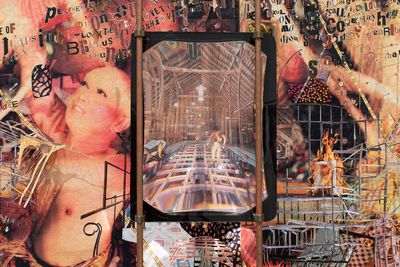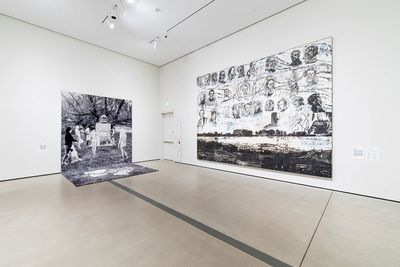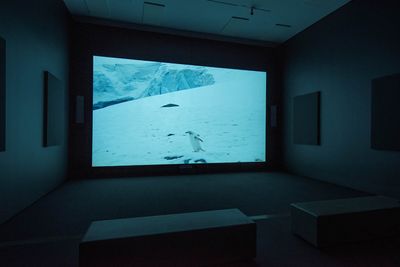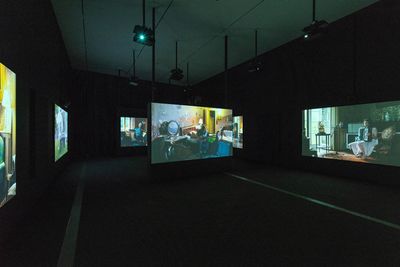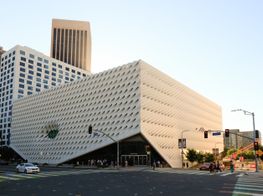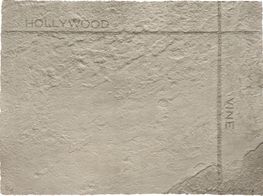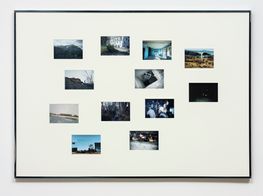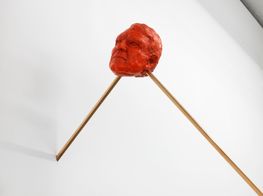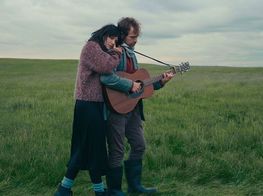A Journey That Wasn’t at The Broad, Los Angeles

Elliott Hundley, the high house low! (2011). Exhibition view: A Journey That Wasn't, The Broad, Los Angeles (30 June 2018–10 February 2019). © Elliott Hundley. Courtesy The Broad Art Foundation. Photo: Coley Brown.
A Journey That Wasn't showcases 55 artworks from the permanent collection of The Broad in Los Angeles, some of which are on view for the first time (30 June 2018–10 February 2019). Located in the museum's first-floor galleries and curated by Ed Schad and Sarah Loyer (both curators at The Broad), the show explores how artists have dealt with representing time across film, painting, sculpture, installation and photography, while considering how it affects memory and perception. Throughout, so the curatorial text states, 'historical styles and events are ruptured, collaged and recontextualised, like portals into seemingly other worlds.' In turn, 'rhythm, repetition, duration, artifice, and appropriation,' come to the foreground.
Five acrylic paintings by Ed Ruscha are located at the entrance of the show: Index (2002), Atlas (2002), Bible (2002), Gilded, Marbled and Foibled (2011–2012) and Azteca / Azteca in Decline (2007). Azteca / Azteca in Decline consists of two long and narrow triptychs hung on opposite walls—they are over 27 feet wide and 4 feet high and depict three colourful flags/ribbons in states of transformation, based on a mural Ruscha saw on a visit to Mexico City. The painting on the left depicts the mural—and the wall on which it was painted—as it would have appeared when Ruscha encountered it, while the second painting shows the same mural decayed, dissolved, and crumpled. The title of the work refers to the fall of the Aztec civilisation, with each painting standing for a different state in time—one of newness and the other of destruction.
What follows Ruscha's display is a mini-survey of Sharon Lockhart's entire 'Pine Flat Portrait Studio' series (2005): part of a larger multimedia project documenting residents of the community of Pine Flat in California, where the artist spent over three years getting to know its young inhabitants. Using a barn that she converted into a studio, Lockhart invited children from the town to have their portrait taken with a large-format camera against a black backdrop. Participants were given free reign over how they might direct their shoot in terms of what they chose to wear, how they posed, and even in the choice of props used in some photographs. The resulting colour chromogenic prints can be viewed as an ethnographic study, in which the town's young inhabitants speak of the particularities of place and their individual identities. In Pine Flat Portrait Studio, Sierra, a young girl stands beside a football helmet, confidently posing in cowboy attire. In the triptych, Pine Flat Portrait Studio, Becky, Damien, Katie, three children are dressed in slogan tops with the words 'freedom, 'tough guys wear pink' and 'Hurley' (a surf apparel brand) communicating individual beliefs and interests.
Offering a counterpoint to Lockhart's people-centred taxonomical study is Bernd and Hilla Becher's 'Water Towers' series (1972): photographs of water towers presented in grids to highlight their sculptural qualities and surrounding landscapes. As with Ruscha's Azteca / Azteca in Decline, these two different sets of images—Becher's and Lockhart's—offer alternate temporal views: one shows youthful aspiration immortalised, the other considers modern architectures as relics.
Collapsing past and present together in a spectacular and traumatic way is Elliott Hundley's monumental 3D collage the high house low! (2011). The work reinterprets Euripides' The Bacchae, a 5th-century BC play written about the god Dionysus's struggle for power and recognition—the story centres on his return to his birthplace in order to clear the maligned name of his mother Semele. Hundley presents a contemporary re-staging of this story by creating four large-scale rectangular panels measuring over 16-feet wide and pinning found objects, letters, cut-outs, plastic fabric, metal, and images of friends to them. These collages reference three central figures from Euripides's play: Semele, Agave, and Dionysus; in the far-left panel, a magnifying glass incorporated onto the surface draws attention to text fragments culled from different sources, some of which allude to the original play.
Goshka Macuga draws on another historical reference in Death of Marxism, Women of All Lands Unite (2013). This large tapestry is based on a photograph of the grave of Karl Marx, with the original communist slogan on Marx's grave 'workers of all lands unite' replaced with 'women of all lands unite'. Women are incorporated into the scene through subjects lifted from the photographs of Miroslav Tichý, a Czech photographer with a questionable surveillance-approach that often captured his subjects unawares. By appropriating Tichý's photographs in a work that weaves the female struggle into Marxist history, Macuga inserts women into a narrative that would normally exclude them, using a medium—weaving—that traditionally connects to women's work. In doing so, Macuga moves the female body from a passive position to an active one, exploring the continual shifting relationships between gender, power, politics and communities across time.
Two major highlights of this exhibition evoke the complexities involved in grappling with time and temporality: the film installation A Journey That Wasn't (2006) by Pierre Huyghe, from which the show derives its title, and Ragnar Kjartansson's nine-screen installation, The Visitors (2012). In A Journey That Wasn't, we see Huyghe and several crew members travel across the Antarctic's uninhabited ice-covered landmass in a quest to find an albino penguin. The intensity of nature is captured by the film, which is filled with mesmerising scenes of icebergs, penguins, and vast landscapes. These shots are interspersed with footage of a performance in Central Park re-creating the expedition, which may or may not have occurred, since the artist has not disclosed whether this was a real or imagined occurrence.
Kjartansson's The Visitors (2012), is exhibited in a darkened room, where nine screens turn on one after another, each featuring one of the nine musicians—all friends of the artist, who also takes part in this ensemble—waiting for their cue to begin. The installation is a result of Kjartansson inviting several friends to stay with him for a week at a crumbling estate in Rokeby, New York, that was filmed in one take. Over the course of the film's hour-plus duration, Kjartansson and his co-performers are seen playing a variety of musical instruments in different rooms in the house and on the porch. Gradually, they start to repeat the lyric: 'Once again I fall into / My feminine ways'—a poem by Ásdís Sif Gunnarsdóttir. Between humming, singing and jamming, this poignant lyric is repeated over and over again for the entire duration of the work, capturing the passing of time as something fragile, unfixed, personal, yet shared.
As an artwork, The Visitors attempts to capture a moment through the individual experiences that unfolded within it, just as A Journey That Wasn't peels back the multiple layers and meanings of time as both a concrete and abstract phenomenon. The exhibition demonstrates how time is a constant frame for an artwork; a frame that is continually in a state of flux as a work moves through contexts and temporalities, encountering the ever-changing subjectivities of different audiences in the process. —[O]


